EAT MY DUST: High Octane Stunts, Low Octane Filmmaking
Eat My Dust was one of the big money makers for New World Pictures during its golden mid-to-late 1970's period. It was a perfect storm of b-movie circumstances: rural-set car chase movies were big at the time and producer Roger Corman managed to snare the star of a top television show, Happy Days' Ron Howard, to topline the film. The end result made money hand over fist at the drive-ins and Corman often points it out as one of his top commercial successes of that era. However, success doesn't always equal quality - and sadly Eat My Dust is one of the least interesting New World hits.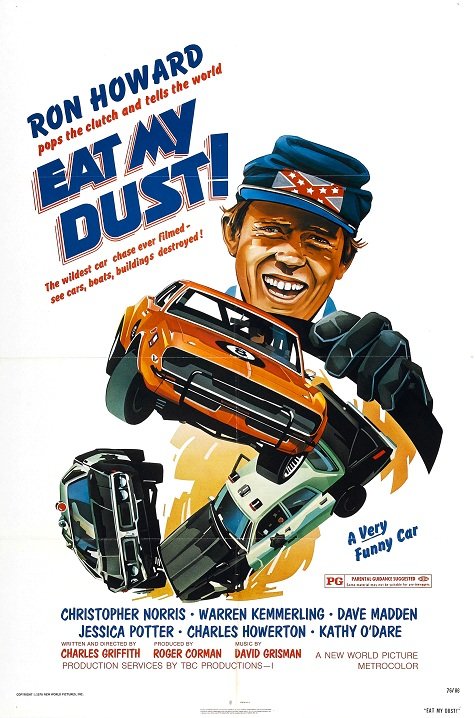 The plot seems like archetypal backwoods chase fodder: Hoover Niebold (Howard) is a young dreamer with a bad habit of getting speeding tickets. To make matters worse, the local Sheriff (Warren Kemmerling) happens to be Hoover's dad and he lords over his son in a ruthless manner. Hoover dreams of something better - a hope embodied in his crush on car-crazy local beauty Darlene (Christopher Norris). When Hoover asks her on a date, she says she'll only go if he nabs a race car to do it - the custom-modded hot rod of race car driver Big Bubba Jones (Dave Madden). Hoover surprises them both when he steals it and lots of chasing and crashing ensue.
The plot seems like archetypal backwoods chase fodder: Hoover Niebold (Howard) is a young dreamer with a bad habit of getting speeding tickets. To make matters worse, the local Sheriff (Warren Kemmerling) happens to be Hoover's dad and he lords over his son in a ruthless manner. Hoover dreams of something better - a hope embodied in his crush on car-crazy local beauty Darlene (Christopher Norris). When Hoover asks her on a date, she says she'll only go if he nabs a race car to do it - the custom-modded hot rod of race car driver Big Bubba Jones (Dave Madden). Hoover surprises them both when he steals it and lots of chasing and crashing ensue.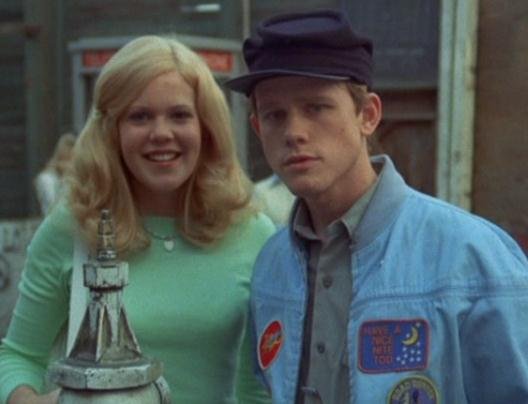 However, this solid setup dissipates under the distracted treatment it gets from Charles B. Griffith. You'd never guess he was such a vital part of Corman's early success as a screenwriter from his work here: the first act chases its tail in a frenetic fashion before finally getting the hero on the road and then goes through the motions until it reaches the inevitable chase-and-crash finale. Even the surprise ending doesn't really connect because it is telegraphed about 20 to 30 minutes before it arrives.It doesn't help that the majority of the characters are annoying. The adults are either nitwits or blowhards while the kids are all obnoxious jerks who take an almost sadistic pleasure in
However, this solid setup dissipates under the distracted treatment it gets from Charles B. Griffith. You'd never guess he was such a vital part of Corman's early success as a screenwriter from his work here: the first act chases its tail in a frenetic fashion before finally getting the hero on the road and then goes through the motions until it reaches the inevitable chase-and-crash finale. Even the surprise ending doesn't really connect because it is telegraphed about 20 to 30 minutes before it arrives.It doesn't help that the majority of the characters are annoying. The adults are either nitwits or blowhards while the kids are all obnoxious jerks who take an almost sadistic pleasure in 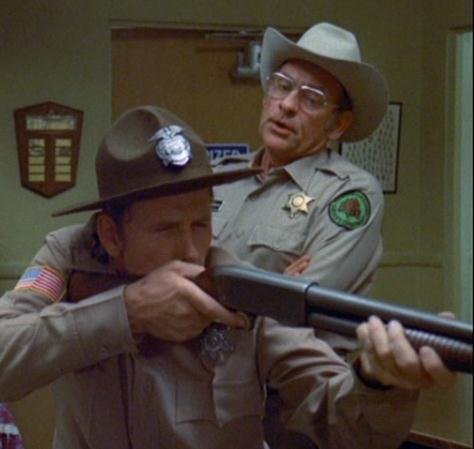 putting the hero down. Even teen-dream Darlene is a bit of a creep, a self-absorbed opportunist who ruthlessly uses her sex appeal to push Hoover into getting her what she wants. Hoover is the most sympathetic of the bunch but it's hard to identify with him because he's a passive, easily led type who is usually the last to figure out what's going on around him.The final annoyance factor here is Griffith's slack direction. He's obviously trying to create an old-fashioned, madcap farce feel here but he lacks the timing and precision to pull it off. More importantly, the emphasis on arguments, slapstick and people acting goofy competes with the car action instead of complimenting it. The frenetic style that he intends to dazzle the audience with
putting the hero down. Even teen-dream Darlene is a bit of a creep, a self-absorbed opportunist who ruthlessly uses her sex appeal to push Hoover into getting her what she wants. Hoover is the most sympathetic of the bunch but it's hard to identify with him because he's a passive, easily led type who is usually the last to figure out what's going on around him.The final annoyance factor here is Griffith's slack direction. He's obviously trying to create an old-fashioned, madcap farce feel here but he lacks the timing and precision to pull it off. More importantly, the emphasis on arguments, slapstick and people acting goofy competes with the car action instead of complimenting it. The frenetic style that he intends to dazzle the audience with 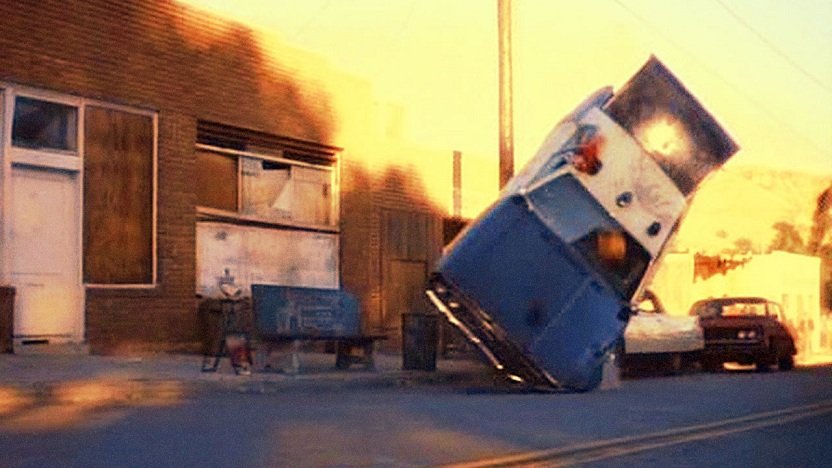 becomes annoying after a short while.Despite these key problems, Eat My Dust does have a few attributes. For starters, Ron Howard delivers a solid performance in Richie Cunningham mode here. He doesn't have much to bounce off of but he definitely earns his paycheck. The film is also extremely well photographed by Eric Saarinen, the same cinematographer who later go on to shoot The Hills Have Eyes for Wes Craven. He gets the most out of the film's rural California locales
becomes annoying after a short while.Despite these key problems, Eat My Dust does have a few attributes. For starters, Ron Howard delivers a solid performance in Richie Cunningham mode here. He doesn't have much to bounce off of but he definitely earns his paycheck. The film is also extremely well photographed by Eric Saarinen, the same cinematographer who later go on to shoot The Hills Have Eyes for Wes Craven. He gets the most out of the film's rural California locales 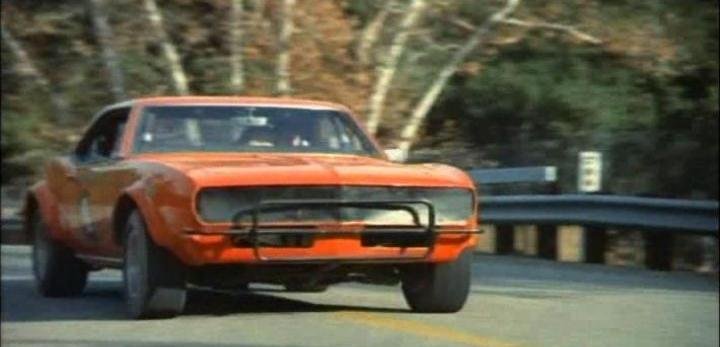 and frames the car stunts for maximum impact. Said stunts were nicely choreographed by Ronald Ross - and Griffith and Corman liked them well enough to gratuitously recycle them a few years later in Smokey Bites The Dust. Finally, the film boasts a unique, bluegrass-tinged score by David Grisman that adds to the film's rural flavor.To sum up, Eat My Dust might qualify as a success for Corman in financial terms but it's one of the lesser entries in his 1970's production canon. It's a big beautiful frame of a b-movie with nothing under the hood.
and frames the car stunts for maximum impact. Said stunts were nicely choreographed by Ronald Ross - and Griffith and Corman liked them well enough to gratuitously recycle them a few years later in Smokey Bites The Dust. Finally, the film boasts a unique, bluegrass-tinged score by David Grisman that adds to the film's rural flavor.To sum up, Eat My Dust might qualify as a success for Corman in financial terms but it's one of the lesser entries in his 1970's production canon. It's a big beautiful frame of a b-movie with nothing under the hood.


